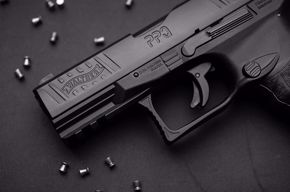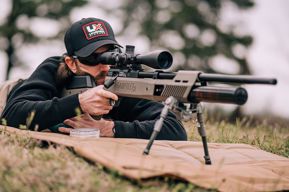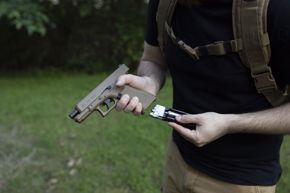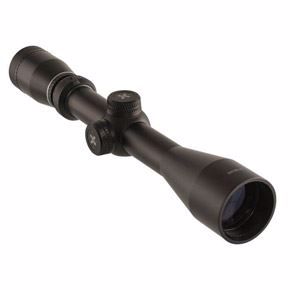In the first installment we looked at some of the various needs shooters have for optics. Now we will delve into some of the common features and characteristics found on shooting optics. Here we will look at reticles, how the scope is calibrated, and adjusted.
Reticles, Angular Measurement, and Adjustment Values
If there has ever been a more contentious subject in rifle optics, I have not heard of it. Decades ago, there was Fine, Duplex, and Mil-Dot. At least that's what I remember from my casual observations as a recreational shooter 25-30 years ago. These days there are innumerable specialty reticles on the market. The hunting world still tends to gravitate, ever so slightly at this point, towards Duplex style reticles. Tactical, flat range, and general shooters have been exposed to Tree style reticles that offer ranging, wind holds, and drop hold-overs.
Additionally shooters are faced with a choice of how they would want the reticle and click values based. There is the MOA (Minute of Angle) camp and the MRAD (Mill-Radian) camp.
Both of these systems are fairly easy to navigate and deciding between the two comes down to a shooter’s preference. Not only is the reticle likely measured in one of these formats, but the click adjustment values of the windage and elevation turrets will likely match the reticle.
MOA measurement is very closely aligned with standard units of measurement. This is not exact, but it is close enough for government work. One minute of angle is equal to 1.047 inches at 100 yards. It takes a while for that 0.047” to make a difference, so a shooter can safely act as though one MOA is one inch at 100 yards. Most of these scopes have ¼ MOA adjustment values in the turrets. That is to say, one click is equal to ¼ of an inch at 100 yards. If you are firmly planted in the world of standard measurements, the MOA system is very easy to work with. Figuring a click value is a matter of division or multiplication. At 50 yards, a click is equal to ⅛ inch. At 200 yards, a single click is equal to ½ inch of movement. Likewise, an MOA reticle is a comfort to non-metric thinkers when it comes to ranging a target and using yards over meters.
MRAD based reticles and adjustment values are taken from the metric system of measurement. This may not be intuitive for people who drive cars with the steering wheel on the left side, but it is not hard to figure out, even if you insist on measuring your shooting distances in yards instead of meters. Skipping over the math that divides a circle for this measurement, know that one mil covers 10 centimeters at 100 meters. Converted to standard units, this works out to about 3.6 inches at 100 yards. Milliradian reticles will utilize mills and half-mills (sometimes smaller graduations) for the holdover marks in both windage and elevation directions. Ideally the click values of the windage and elevation turrets will be set up in a corresponding Milliradian based adjustments. This is typically 1/10 of a milliradian or one centimeter per click at 100 meters. Converting to standard units, one click will move the reticle 0.36 inches (1/10th of 3.6 inches). Staying with the metric system certainly simplifies using MRAD style optics, however, you will always have a more coarse adjustment-- .36" vs .25" at 100 yards. At 1000 meters one click moves the bullet impact 10 centimeters
Some of you may be saying there’s another option and you would be right. This would be the “BDC” reticle. This is a reticle that is made to match the known ballistic drop of certain, usually extremely common rounds at various graduated distances will be represented on the optic's reticle. These are great reticles when you carefully match the bullet weight, barrel length, powder charge, etc. For example, I have two Trijicon ACOGs. One is made for a 14.5” barrel rifle shooting 55 grain 5.56 ammo and the other is made for a 20” barrel rifle shooting the same 55 grain ammo. While there’s not a huge difference between the two reticles, they are in fact different. This really doesn’t appear to the shooter until you move the target out to 300 or so yards. The difference in velocity between the 14.5” barrel and 20” barrel at the muzzle is about 150 FPS, so at some point the difference between the two will become obvious in the bullet's impact on the target. BDC reticles certainly have their place and should not be overlooked by shooters looking for the right optic for their needs.
In the third installment we will look at some other factors in optics selection like Illumination, tube size, and technology.






